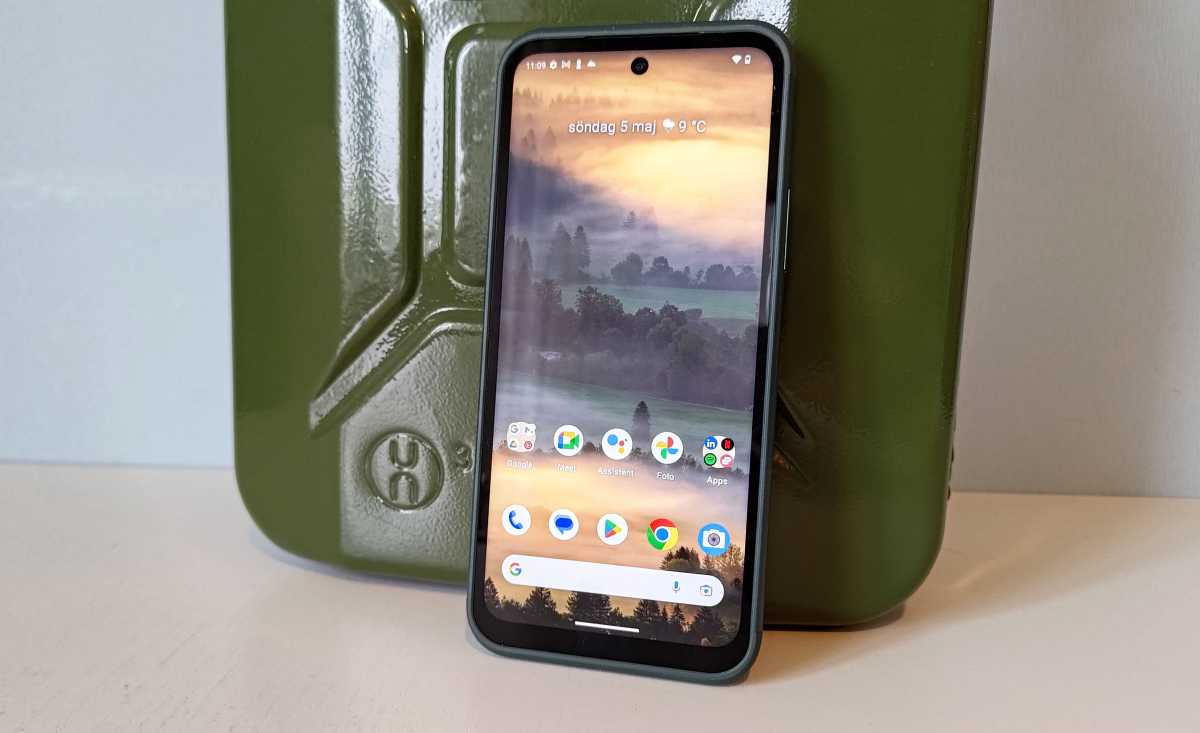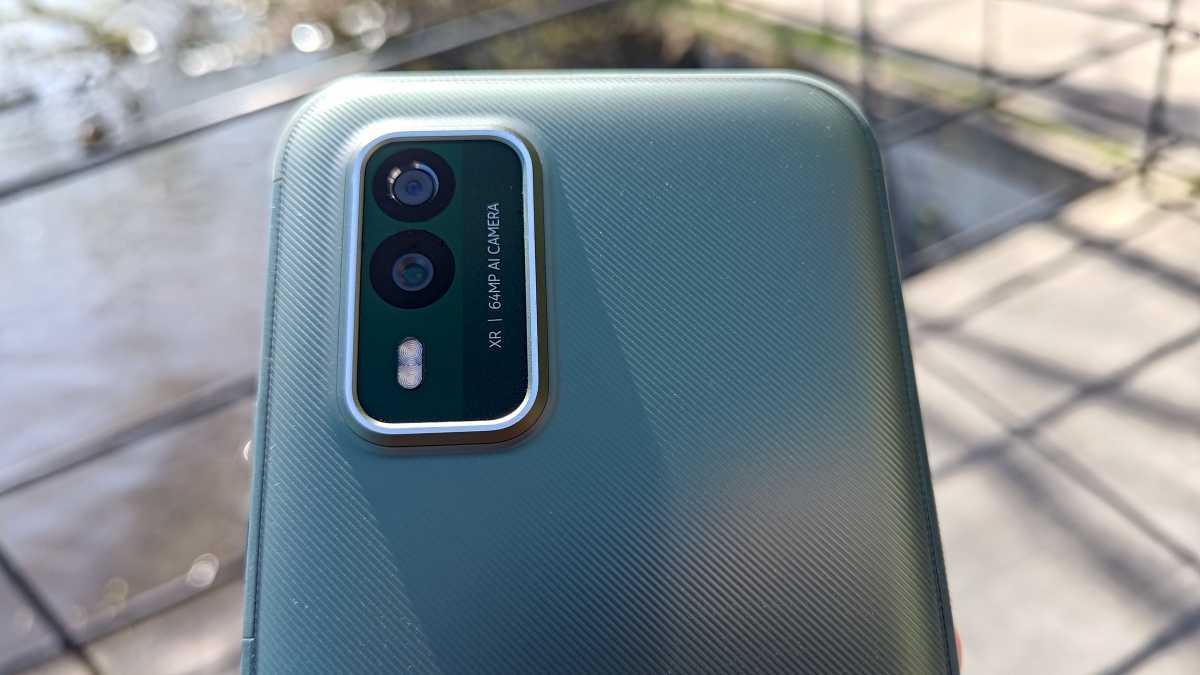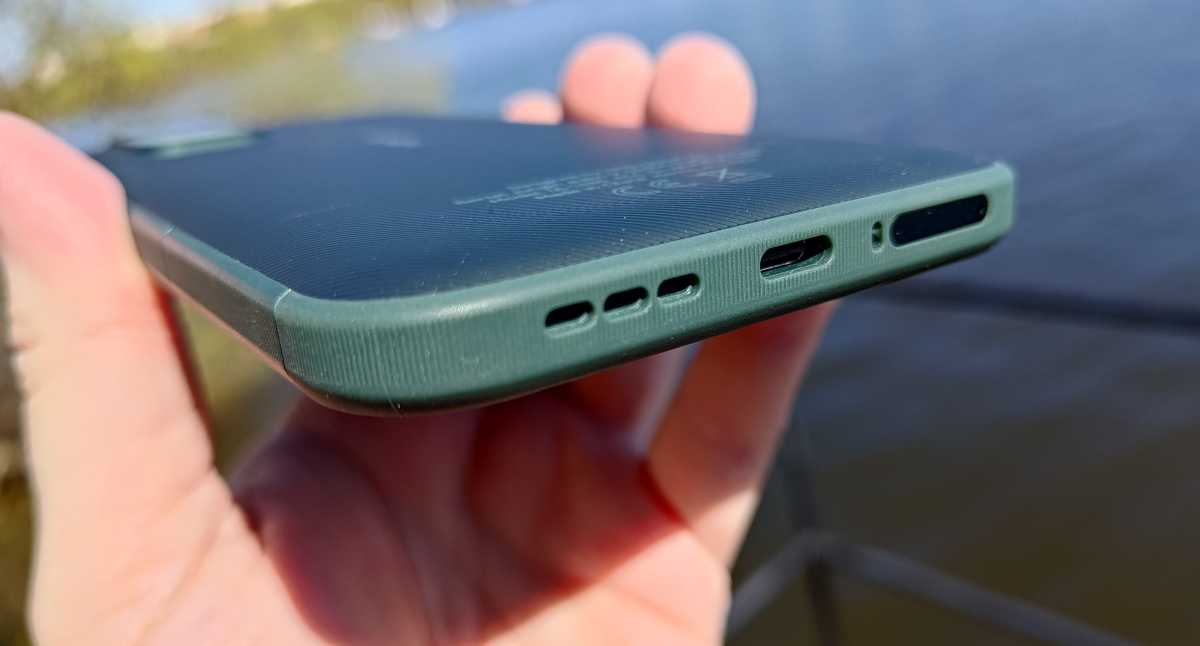Expert’s Rating
Pros
- Durable and water-resistant design
- Powerful sound
- Good battery life
- Handy extra physical buttons
Cons
- Lagging behind in performance
- Mediocre camera
- Not so bright screen
- Limited software updates
Our Verdict
It doesn’t have the performance to compete with other mid-range phones, and the screen, cameras and systems leave plenty to be desired. But that’s the price you pay for an extra-tough mobile that’s still comfortable to use. Battery life is another key strength.
HMD doesn’t make premium phones. Not anymore, anyway.
In the first few years after the Finnish upstart took over Nokia’s mobile phone brand, they made a few attempts, but nothing really worked. Now they’ve settled on making no-nonsense budget and mid-range mobiles, and are also betting big on semi-smart so-called “feature phones”.
The Nokia XR21, launched in June 2023, is its most expensive smartphone at the moment, with a price of £499.99. A lavish mid-range phone with typical mid-range features in terms of performance, functionality and quality, but with an ace up its sleeve – significantly better durability than an average smartphone.
With extra protective casing on the outside (parts of the frame are protected by rubber), a sturdy build and cushioned inner chassis, the Nokia XR21 can withstand being dropped from 1.5 metres onto a concrete floor, and has been tested for vibration and temperature resistance to MIL-STD-810H military-grade levels.
For swimming and other adventures
It features fully waterproof construction with IP68 and IP69K ratings. It is claimed to withstand both 1.5 metres depth for one hour, being hit by powerful water jets, and has ingress protection against chemicals other than water. The screen is covered with Gorilla Glass Victus for extra protection against cracks and its protective strips extend over the glass, minimising the risk of edge impact.
All of this adds up to a large phone with wide screen edges around the display. It looks like it permanently has a mountable shell. But it’s not extremely bulky and the buttons in the frame are smoother than those built into many mobile phone cases.
You also get two bonus physical buttons, one on the top short side and one on the left long side, which can be set as shortcuts to different apps and functions. This can be helpful if you are wearing thick gloves, for example. Thin gloves and even a wet screen are two things the phone can otherwise handle well.
The screen struggles in the sun
The screen itself is nothing remarkable, a 1080p IP panel with up to 120Hz refresh rate, by default set to automatically adjust (down as far as 60Hz) in a dynamic mode. There are slight shifts in contrast at different viewing angles, but nothing that causes too much disturbance.
The screen has a fairly high brightness of up to around 500 nits. But with a a screen surface that doesn’t do much to counteract reflections, you may have problems with readability outdoors in bright sunshine, but a little shade, or clouds in front of the lamp in the sky is enough to make it look better.
On paper, the Nokia XR21 is supposed to support HDR10, but the question is how good the effect will be with such moderate natural dynamics in the panel. The colour gamut is also moderate, slightly below sRGB level, but with good colour accuracy overall.

Mattias Inghe
You’ll enjoy using the phone most when taking photos. Using the 64Mp main rear sensor, you’ll easily capture great-looking images with reliable colour balance and good dynamics. An AI feature in the camera software adds a bit too much artificial sharpness and tries to push up the saturation in many of my test shots, though.
I don’t appreciate this, as it means I don’t have as much direct control over the result. However, the camera’s AI automatically detects if my subject is a portrait, and gives suggestions for filters and more. Skin tones are also captured well.
Cameras are disappointing in low light
In low-light, the camera loses quality, with a lot of noise in dark areas and forced long exposure that makes it difficult to keep the phone stable.
The main camera is joined by an 8Mp fixed-focus wide-angle. It matches the main camera in dynamic range and colour management, and landscape shots during the day can be really nice, but lose both dynamic range and image clarity even faster when it gets dark.
This is typical mid-range stuff for photography, and the same applies to videos. You can’t get more than 1080p video at 30fps, and that’s with a fairly laggy viewfinder and unconvincing image stabilisation. The microphones are better, and convincing especially if you’re trying to pick up your voice.

Mattias Inghe
The moderate camera performance is partly due to a cheaper Omnivision sensor but also to limited performance. It’s powered by the Snapdragon 695 5G system chipset with 8 cores, 6GB of RAM and 128GB of semi-fast storage.
It’s fast enough to run all the basics, like browsing, emailing, scrolling through your Facebook feed or streaming video, with no problems. But there are clear limits to how heavy apps and games you can run without your phone breaking down. More than 6GB of RAM would’ve been a plus, while 128GB of storage may be a bit tight for some.
There is no space for a Micro-SD card, despite dual-SIM support via the slot on the underside. Depending on where you’re based, this may be either two physical SIM cards, or one physical and one eSIM.
The battery is a pleasant surprise
With a 4,800mAh battery, my expectations for operating time weren’t particular, but the phone exceeds them.
Brightness has an unusual impact on battery life, so outdoor filming draws more power than working and browsing on a screen indoors. You can work on your phone actively all day, and with occasional use it will last a couple of days between charges.
That’s good, because it’s not terribly fast-charging. It’s supposed to be able to handle 33W of charging, but in my measurements with a 65W charger, I get at best 1% charge per minute.
The Nokia XR21 was shipped at launch with old Android 12, but mine came factory fresh with Android 13 without me having to do an update. As always from Nokia, it’s a very clean interface with only minimal custom add-ons.
Nokia only promises two years of OS updates, and the phone is a year old at the time of writing, so don’t expect to get more than Android 14 for it. On the other hand, you get four years of security updates and a three-year warranty.
Pricing & availability
The Nokia XR21 cost £499.99/$499.99 at launch, but makers HMD are currently selling it for £399.99/$399.99.
You can also buy a refurbished model from the same company for £319.99 in the UK.
Should you buy the Nokia XR21?
For most people, the answer is no. There are plenty of mid-range phones that offer better value for money than the Nokia XR21, even when it’s discounted.
However, if you want a rugged smartphone that can withstand the elements and offer long battery life, it’s still worth considering.
Specs
- Qualcomm Snapdragon 695 5G
- 6GB RAM
- 128GB storage
- 6.49-inch IPS LCD display, 1080×2400, 120Hz
- 64Mp main rear camera
- 8Mp ultrawide camera
- 16Mp front-facing camera
- USB-C
- 3.5mm headphone jack
- 5G
- Wi-Fi 6
- Bluetooth 5.1
- NFC
- IP68/IP69K
- Ships running Android 12
- 4800mah battery
- 33W charging
- 168 x 7.8.6 x 10.5mm
- 231g
This article originally appeared on our sister publication M3 and was translated and adapted from Swedish.















